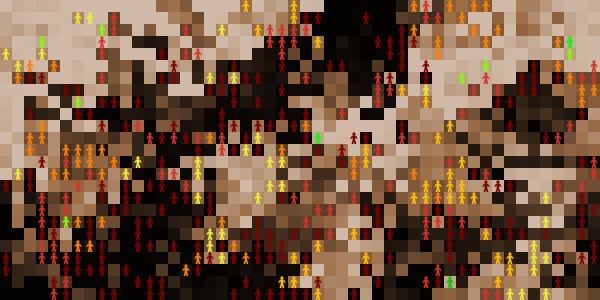TeachingBase
NetLogo: Evolution of resource use with harvest efficiency
This NetLogo model builds on the model of Evolution and competition for resources. Agents harvest resources and reproduce based on the amount of resources that they harvest. The harvesting behavior evolves in the population. Harvesting behavior is costly and this harvesting cost can be changed through parameter settings. One can observe the influence of harvesting cost on the evolution of the agents and the social-ecological system.
The model extends the concepts of social interactions, resource use, competition, variation, selection, inheritance, trait frequencies.
In this model, the harvest rate is not set by the student through parameter settings, but it evolves within the model (i.e. one says it emerges endogenously from processes within the model, rather than being determined exogenously). The parameter that influences this evolution of harvest rate and can be set by the user is a factor for harvesting costs, i.e. the fraction of energy costs that agents pay for their harvesting behavior. The lower the cost, the more efficient the resource use. The higher the cost, the less efficient it becomes to acquire large amounts of resources (diminishing returns). This parameter thus introduces a further aspect of the biological (and technical) world, i.e. the fact that organisms need to invest energy and resources into their behavior for acquiring and/or processing resources.
Students can run experiments to determine under which parameter settings a sustainable social-ecological system emerges, create a causal map of the system as represented in the model, and transfer aspects of the model critically to the real world.

- Teaching material type Analogy mapping, Causal map, Computer Model, Full lesson plan
- Concepts Evolution, Interdependence, Sustainable resource use
- Subject areas Biology, Computer Science, Economics, History, Human Evolution, Math, STEM
- Suitable Grade Levels 9-12

